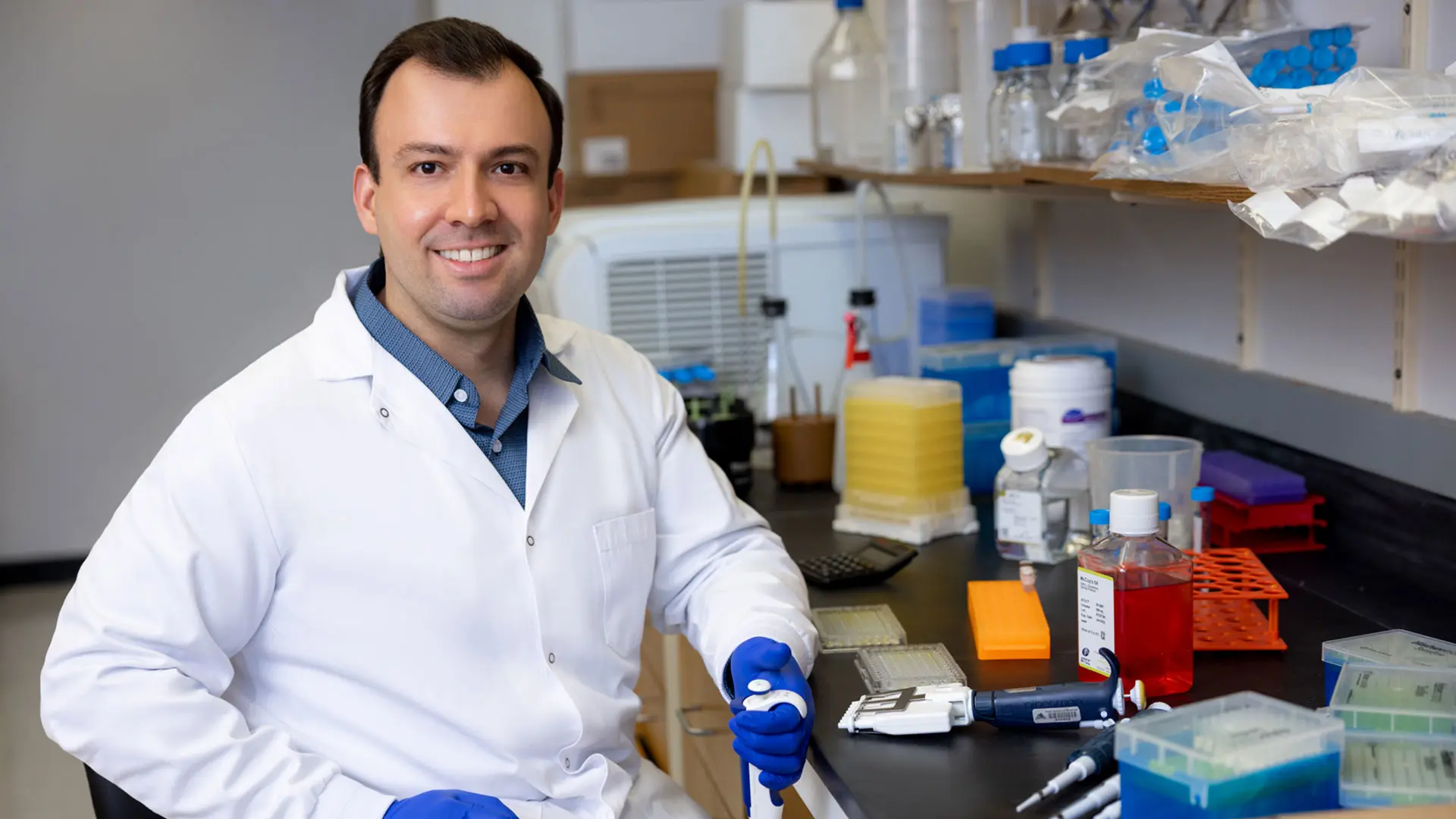
Lucas Ferrari de Andrade, PhD, Assistant Professor, Oncological Sciences
Patients with acute myeloid leukemia (AML) have not benefited from the use of T-cell checkpoint blockade immunotherapy, to date. AML manages to cleverly evade the surface markers that the immune system recognizes in order to attack malignant cells.
But researchers at the Icahn School of Medicine at Mount Sinai have successfully deciphered the biological mechanisms of that resistance and proposed a novel combination treatment that has shown considerable promise in mouse and human models. The regimen consists of antibody-mediated inhibition of the shedding of the proteins MICA and MICB expressed by cancer cells, which, in turn, promotes macrophage-driven destruction of leukemia cells. The process is described in a research article currently in press in the journal Blood.
“The idea of using MICA and MICB as leukemia antigens is entirely new, and a big step for AML immunotherapy, because we can now directly target leukemia cells and potentially spare cells that are not malignant,” says Lucas Ferrari de Andrade, PhD, Assistant Professor, Oncological Sciences, Icahn Mount Sinai, the senior author of the study.
Underlying this therapeutic approach are several intricately linked steps. At the center are MICA and MICB on the surface of malignant cells that bind to the natural killer (NK) group 2D receptor, stimulating NK cells. The expression of MICA and MICB are markers that alert the immune system to the presence of leukemia cells that need to be destroyed. However, tumor cells frequently escape this natural destruction by shedding MICA and MICB from the cellular surface through proteolytic cleavage. The Mount Sinai researchers thus identified MICA and MICB shedding as a therapeutic target for AML.
"Using MICA and MICB as leukemia antigens is a big step."
"Now we can target leukemia cells and spare the non-malignant cells."
To that end, they introduced the monoclonal antibody 7C6 into the therapeutic process. Dr. de Andrade’s laboratory focuses on developing monoclonal antibodies that promote antitumor activity, and his team developed 7C6 in 2018. “Our antibody binds to MICA and
MICB at the point of cleavage and completely stops their shedding from the cell surface,” says Dr. de Andrade. “As a result, the proteins remain on the cell surface and are marked for destruction by macrophages.”
His research team also learned that the back end of 7C6, known as Fc domain, is critical to the killing process because it enables macrophages, which do not have receptors for MICA and MICB, to recognize the leukemia cells by way of Fc receptors.
Another pivotal finding described in the study was that romidepsin, an epigenetic therapeutic, further enhanced the surface expression of MICA and MICB in leukemia cells when combined with 7C6 and inhibited leukemia in a humanized AML model. “Some patients have cancers that don’t express MICA and MICB,” says Dr. de Andrade. “Romidepsin induces
that expression, so that 7C6 can bind to tumor cells and prompt an immune reaction.”
The next major steps for the proposed combination therapy of 7C6 and romidepsin would be preclinical trials to verify safety, followed by clinical studies to establish efficacy. Meanwhile, the Mount Sinai team continues its research into optimizing the binding affinity of 7C6 to macrophages.
“We believe this therapy could be particularly important to the significant number of patients who are refractory to all other AML treatments,” Dr. de Andrade says. “Having an effective
treatment in a field where there are currently no approved immunotherapies for acute myeloid leukemia would help to fill a huge clinical void.”
